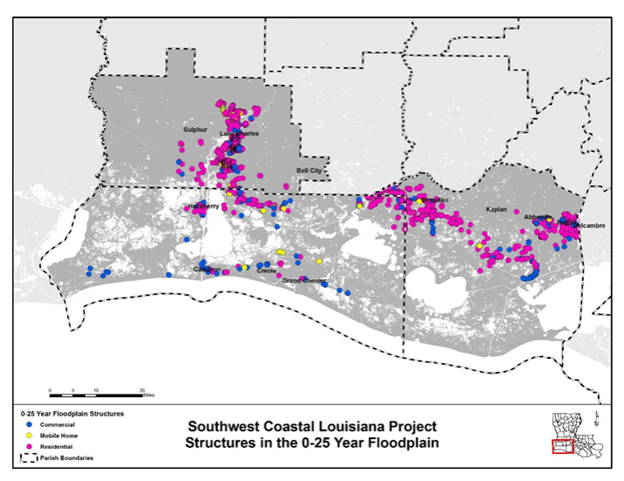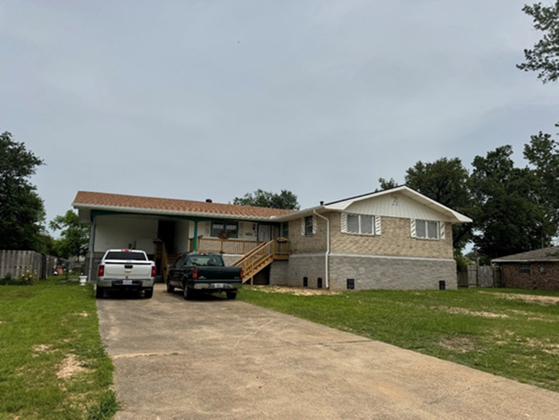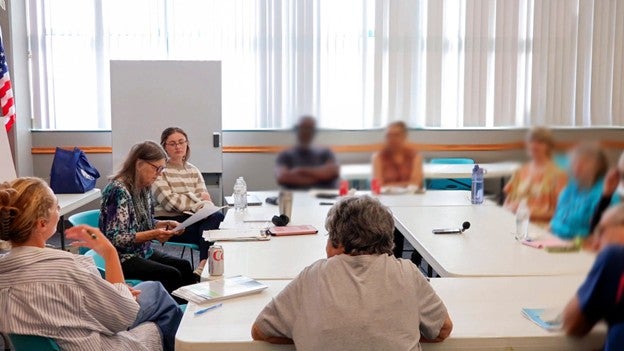Rising Above Flood Risk: How Louisiana Is Adapting Through Home Elevation
Flooding is a persistent challenge for communities across the United States, particularly in coastal areas. Increasingly frequent and severe storms, rising sea levels, coastal land loss and land subsidence are putting people and property at greater risk. While many states and localities are actively working to reduce this risk, large-scale infrastructure solutions like levees and seawalls aren’t always practical, especially in rural areas.
In many cases, the best and most cost-effective solution isn’t to block water, but to adapt to it. Home elevation programs, which raise homes above anticipated flood levels, have emerged as a promising strategy to protect both residents and property.
As Louisiana and other states begin exploring these programs, meaningful engagement with local communities will be essential to ensure their success, particularly in the communities where home elevation offers the most significant flood risk reduction.
Home elevation: a nonstructural solution with high potential
For decades, the U.S. Army Corps of Engineers (the Corps) has been the leading agency working with communities and funding efforts to reduce flood risk through levees, floodwalls and ecosystem restoration. Beginning in the 1970s, the Corps also began exploring other solutions that reduce the impacts of flooding rather than preventing it entirely. These approaches, referred to as “nonstructural solutions”, provide communities with additional tools to manage flood risk effectively.
While relocation is often the safest option when a restoration project is not possible, it’s not always feasible or desired—especially in communities with deep cultural roots or generational family homes. Raising homes above flood levels offers an alternative that allows residents to remain in place, maintaining the fabric of their communities while significantly reducing the risk of life loss and costly damage. Today, more than 100,000 structures across the country (approximately 20,000 of which are in Louisiana) have been identified as candidates for the Corps-led nonstructural approaches.
For state and local leaders, home elevation programs with the Corps offer a valuable complement to existing flood mitigation strategies. Raising homes can be cost-effective and often face fewer permitting hurdles than large-scale structural efforts. However, these projects do require a different set of strategies to implement them successfully.
Unlike other infrastructure projects, home elevations involve working with individual homeowners, with participation being entirely voluntary. Success depends on building trust with homeowners, understanding their needs and providing transparent communication throughout the process.
A case study from Southwest Coastal Louisiana
In Calcasieu, Cameron and Vermilion parishes in southwest Louisiana, the risks of flooding are stark. Many of the populated areas in each parish are low-lying and flat, making it increasingly vulnerable to threats from hurricane storm surge, sea level rise and wetlands loss. The people, local economy, natural environment and cultural heritage – all deeply tied to the land – are at risk.
In 2016, the Corps, in conjunction with the Louisiana Coastal Protection and Restoration Authority (CPRA), identified approximately 3,900 homes and other properties at severe risk of flooding, and in 2023 began offering eligible residents an opportunity to elevate their homes. The cost of elevating homes eligible for this project will not fall on residents, as it will be cost-shared between the Corps and CPRA.* Yet despite the extent and availability of support, applications have been lower than expected, and only one home has been elevated so far, with two more under construction.
To better understand what is holding residents back, Restore the Mississippi River Delta (MRD), along with UNO-CHART and Fenstermaker, conducted multiple focus groups and interviews with local homeowners and businesses in each parish included in the project.
The findings revealed a clear desire among residents to make their homes safer. “I don’t want to go through what I did again,” one participant said, in reference to past flooding events.
At the same time, the study showed significant challenges that must be addressed. Many residents expressed skepticism and distrust, especially following past disasters and other federal recovery programs. Many residents felt overwhelmed, sharing concerns about eligibility, insurance, safety, accessibility for older residents and more. These attitudes varied across parishes, highlighting the importance of engagement strategies that are carefully tailored to the needs of each community.
What states can do to build successful home elevation programs
The study found that for Corps-led home elevation programs to succeed, community outreach is not optional; it is essential. Success hinges on trust, transparency and one-on-one engagement. Local and state sponsors working with the Corps on home elevation or other nonstructural programs should urge the Corps to include the following strategies as part of the project:
- Start with local knowledge: Successful engagement begins with listening. Work with community members to understand the history, demographics and concerns.
- Communicate clearly and consistently: Residents need accurate, timely and easy-to-understand information on topics ranging from costs, to process, to physical impacts of elevation.
- Stay present throughout the process: Don’t disappear after a resident expresses interest or applies—regular follow-up can maintain momentum and build long-term relationships.
- Use diverse, two-way communication channels: Information should be shared via a mix of mailers, social media, ads and in-person outreach. Community members should have equal space to ask questions and share experiences.
- Partner with trusted local leaders: Churches, nonprofits and community advocates can help bridge gaps in understanding and trust. “The best thing that we have found is people will trust local voices more than they will trust Mr. Federal Government that they’ve never met before,” said one resident.
- Engage in person whenever possible: Face-to-face conversations make a difference, especially in communities with past negative experiences. Consider showing interested residents completed elevations for more tangible understanding of the process.
Reducing flood risk requires a combination of strategies. Home elevation offers a practical and powerful solution where traditional structural barriers like levees and seawalls may not be feasible. By partnering with the Corps to build strong community engagement strategies, state and local leaders can make these programs both effective and sustainable. The time to act is now before the next storm tests our communities and our defenses.


